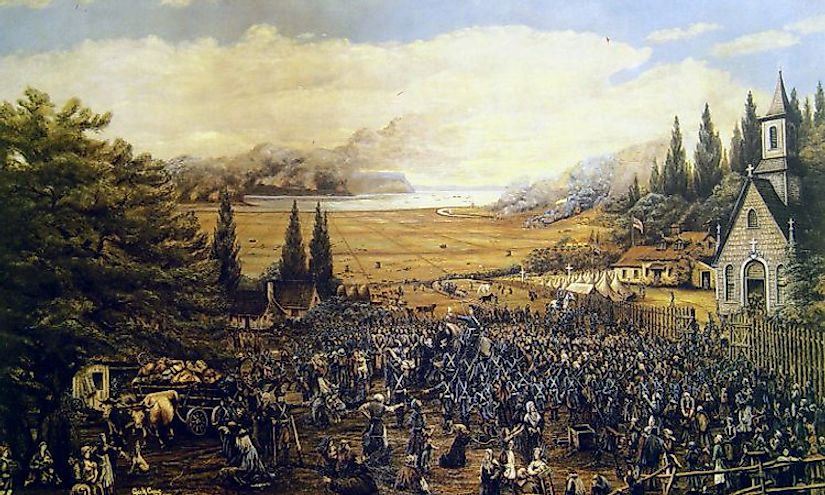What Was the Great Upheaval?

The great upheaval, also known as the great expulsion, the great deportation, the expulsion of Acadians, took place during the French Indian War and went on from August 10th, 1755 to July 11th, 1764. The upheaval involved forceful removal of Acadians from their homes in New Brunswick, Prince Edward Island, Nova Scotia among others by the British. In 1713, The British formed The Treaty of Utrecht which allowed Acadians to keep their land. In return, they would have to take an oath of unconditional allegiance to the British. However, this oath did not sit well with the Acadians for two reasons. First, British were Protestants while Acadians were Roman Catholics. Secondly, signing the treaty would leave them vulnerable to attacks from their neighbors and friends, the Mi’kmaq, who were against the British occupation of New France. The Acadians instead negotiated a deal where they would remain neutral. A group of Acadians however revolted and participated in attacks against The British.
Reasons Behind The Upheaval
The British were against New France. Acadians maintained supplies to Beausejour and Louisbourg which were French fortresses. They also fought alongside the Mi’kmaq against the British government. Charles Lawrence saw this as a threat and together with the Nova Scotia Council, ordered the expulsion of Acadians, a means to eliminate the problem at hand.
The Expulsions
The expulsions took place in two waves. During the first expulsion, Acadians were deported to the 13 British colonies. Beausejour was captured first and Acadians deported to the rural areas of the British colonies of Connecticut and New York. The Acadians moved to the colonial port cities where they gathered in small French-speaking communities, which in turn had the government worried. Those who were left behind retreated to francophone colonies of St John Petit Codiac Rivers the Miramichi in New Brunswick. The British returned and captured 700 troops of Acadians, attacked 20 households, and killed 200 heads of livestock to cut supplies to Louisburg. The second wave of expulsion saw Acadians deported to France and Britain. In September 1758 more Acadians were deported to Halifax. The first deportation involved women and children followed by the men who were forced to remain behind to destroy their own homes.
The Revolts
There were revolts during The Great Upheaval. The Mi’kmaq and the Acadians had close ties through intermarriages and their Catholic beliefs. The Acadians were many while the Mi’kmaq had the military strength. Together they fought against The British. Charles Deschamp led The Wabanaki Confederacy and the Acadians in Guerilla warfare. They attacked British forts such as Fort Cumberland, captured British soldiers, scalped them, and mutilated their bodies.
The Aftermath Of The Great Upheaval
Out of all the Acadians in the region who were approximately 14,000 in number, 11,500 were deported and only 2,600 remained in the colony who evaded capture. The Great Upheaval also led to the death many Acadians. Two ships, Violet and Duke William, sank with about 280 and 360 people aboard respectively. Others died during the war. The economy went down since the displacement made sure Acadians left their farms unattended. French fortresses Beausejour and Louisburg also fell since all supplies were cut, besides the mass ambush by the British. In 1764, Acadians were allowed to legally return to British colonies provided the sign an oath of allegiance.







